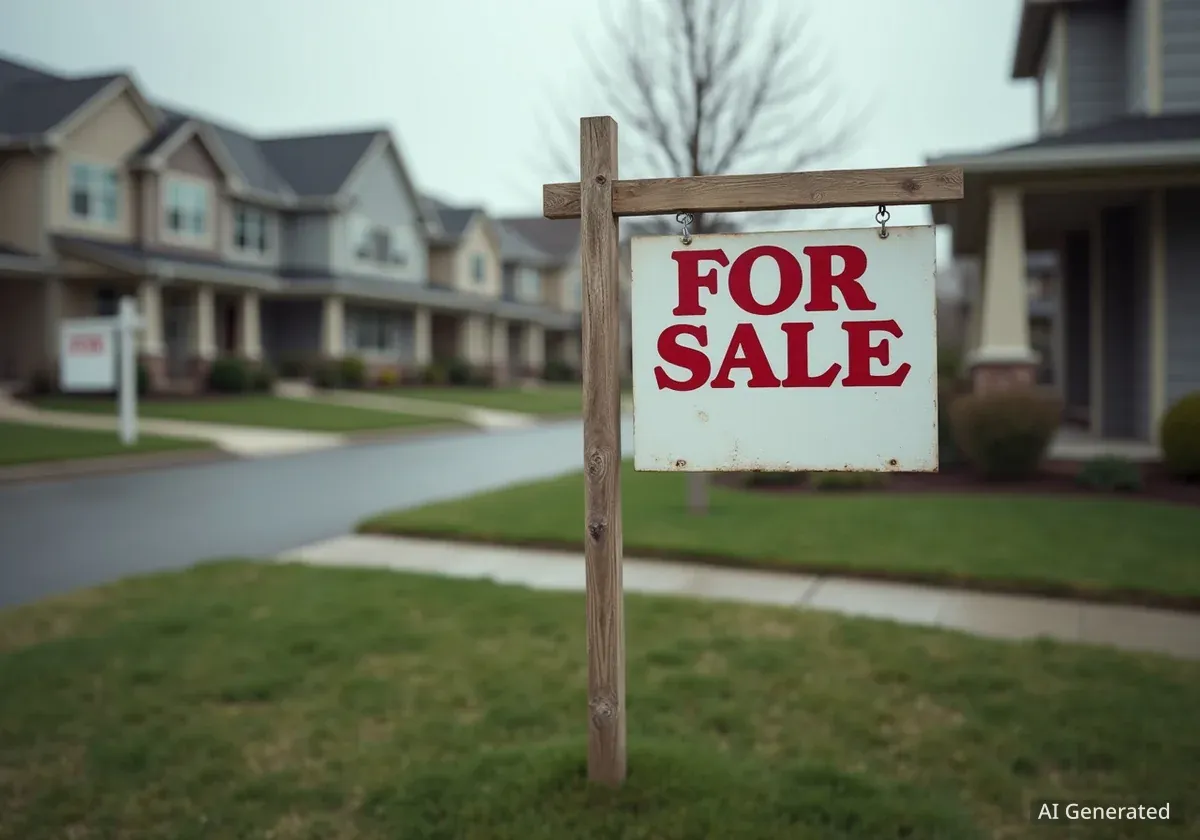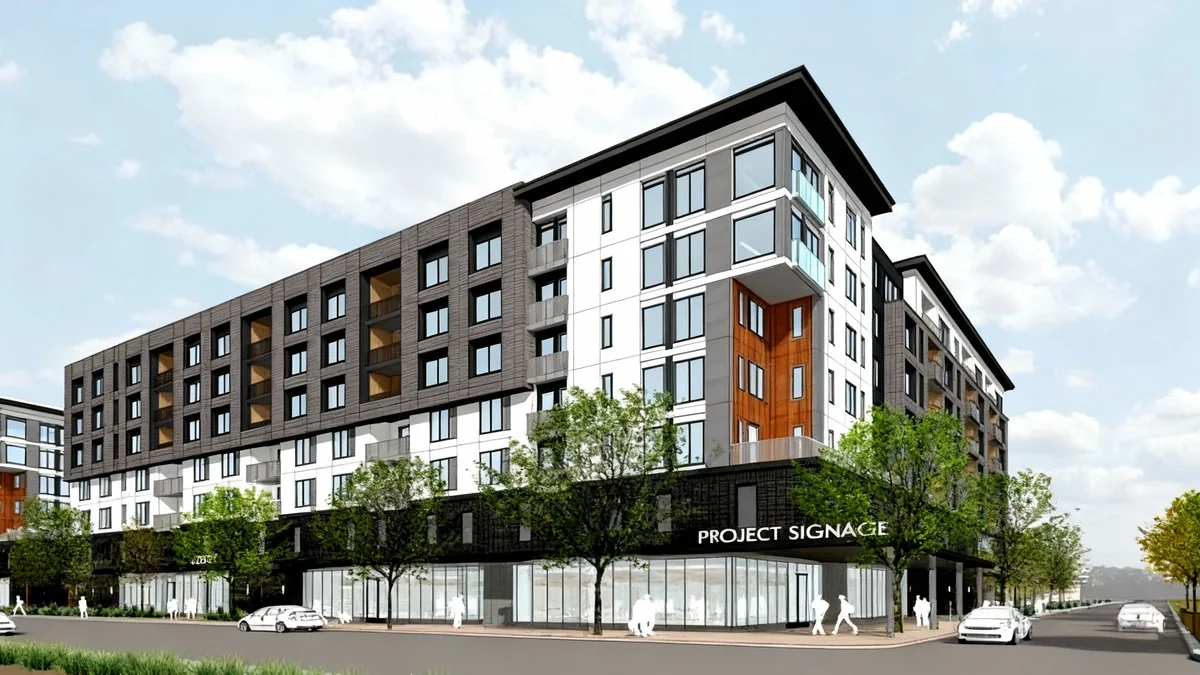Ben LoPiccolo, a veteran real estate developer in Jersey City and president of the Jersey City Apartment Owners Association, is calling for significant regulatory reform to address New Jersey's persistent housing affordability crisis. He argues that complex government hurdles and lengthy approval timelines are primary factors constricting the housing supply and driving up costs for residents across the state.
With over two decades of experience transforming properties in the city, LoPiccolo states that the current environment makes it increasingly difficult for developers to build homes efficiently, a problem that affects all segments of the market, from luxury to low-income housing.
Key Takeaways
- Developer Ben LoPiccolo identifies high construction costs and interest rates as significant financial barriers to building new housing.
- He claims governmental regulations and lengthy approval processes, which can take up to five years for a mid-sized project, are shrinking the available housing supply.
- LoPiccolo advocates for streamlining zoning, planning, and inspection processes to incentivize the construction of all types of housing.
- He believes that increasing the overall housing supply, including luxury units, is essential to alleviate pressure on the affordable housing stock.
- His organization, the JCAOA, is working to educate the public about the complexities of development to counter local opposition to new projects.
The Transformation of Jersey City
Ben LoPiccolo began his development career in New Jersey in 1998, a time when Jersey City's landscape was vastly different. He relocated his focus from Manhattan after recognizing the untapped potential across the Hudson River.
"Jersey City back then, quite frankly... was not a place you would go to," LoPiccolo recalled, noting its reputation at the time. "For New Yorkers, a lot of people didn’t even know what Jersey City was."
He started by renovating and selling historic homes in the Hamilton Park neighborhood before expanding his business, the Ben LoPiccolo Development Group (BLDG-UP), into new construction projects. He witnessed the city's rapid evolution firsthand.
From Industrial Past to Residential Hub
In the late 1990s, Jersey City's waterfront was dominated by dilapidated warehouses and industrial properties, with only a couple of high-rise residential buildings. Over the past 25 years, the area has undergone a dramatic transformation, with tens of thousands of new housing units being built, turning it into a sought-after residential and commercial destination.
"When I first got here, the waterfront only had two buildings on it, two high-rise buildings," he said. The progression of development since then has been swift, fueling what he describes as "tremendous growth."
Identifying Barriers to Affordable Housing
Despite the construction boom, housing affordability remains a critical issue in Jersey City and throughout New Jersey. LoPiccolo points to a combination of financial and regulatory pressures that make it challenging to meet the growing demand for housing.
"There’s a lot of hurdles that developers have to go through to develop real estate, especially today," he explained. He cited soaring construction costs and high interest rates as major financial obstacles that can make projects unfeasible.
The Impact of 'Red Tape'
Beyond market forces, LoPiccolo emphasizes the role of governmental processes in slowing down new construction. He argues that these hurdles have become more severe over time, contributing directly to the housing shortage.
"It’s become more and more difficult to build. And that difficulty has made the supply shrink. As the supply is shrinking, and the demand keeps growing, Jersey City keeps getting more and more expensive."
This imbalance between supply and demand is at the heart of the affordability problem. Critics often point to the rise of luxury high-rises as a sign of a healthy development market, but LoPiccolo suggests this view is incomplete. He contends that without a sufficient supply of all housing types, the entire market feels the strain.
A Five-Year Timeline for a 70-Unit Project
To illustrate the extent of the delays, LoPiccolo shared a personal example. A 70-unit project he is currently developing took five years to move from planning to the groundbreaking stage. He contrasted this with his early days in 1998, when a similar project could break ground within a single year.
A Call for Systemic Reform
To rebalance the market, LoPiccolo believes policymakers at the local and state levels must take decisive action to streamline the development process. He supports proposals aimed at cutting through bureaucratic delays, such as those mentioned by political figures focused on reducing red tape for businesses.
He suggests adding a crucial component to these reform efforts: "Just make it easier to build homes that people can afford."
This involves a multi-faceted approach:
- Zoning and Planning: Reforming local zoning laws to allow for more density and faster approvals.
- Inspection Processes: Ensuring that building inspections are conducted promptly to avoid construction delays. LoPiccolo noted that while state laws allow for private inspectors when municipal staff are unavailable, developers are often hesitant to use them for fear of backlash from local departments.
- Environmental Regulations: Reviewing Department of Environmental Protection (DEP) rules to identify areas where regulations could be made less burdensome without compromising safety or environmental standards.
Why All Housing Types Matter
A central part of LoPiccolo's argument is that the housing market is interconnected. He pushes back against the idea that only building designated "affordable housing" solves the problem. According to him, a shortage of luxury or market-rate housing has a direct impact on more affordable options.
"If you’re not building—whether it’s luxury housing, middle-class housing or low-income housing—people who are not able to find luxury housing, for example, on the waterfront, will find a way to move somewhere in and around Jersey City and take up the affordable housing stock," he stated. "So, housing is housing."
Engaging the Community to Foster Support
Developers often face resistance from local communities, a phenomenon commonly known as NIMBYism ("Not In My Back Yard"). This opposition can create another significant hurdle for new projects aimed at increasing housing density.
As president of the Jersey City Apartment Owners Association (JCAOA), LoPiccolo is working to address this challenge through public education. The organization advocates for property owners and developers while also promoting responsible solutions for affordable housing.
The JCAOA Community Tour
To build understanding, the JCAOA has initiated a community tour. The goal is to educate residents on the entire real estate development process. This includes explaining the high costs of construction, the impact of interest rates, and the numerous regulatory steps developers must navigate. By providing this context, the association hopes to foster more sympathy and support for new housing initiatives.
"A lot of people don’t understand what the entire process entails when it comes to real estate development," LoPiccolo said. "The more they understand... the more they begin to sympathize." Through this educational outreach, he hopes to shift the public conversation from one of opposition to one of collaboration in solving New Jersey's housing crisis.





